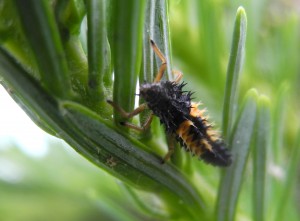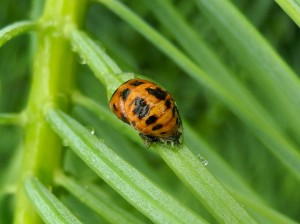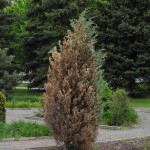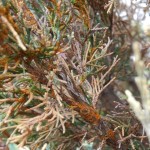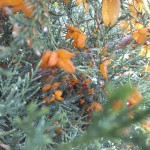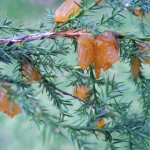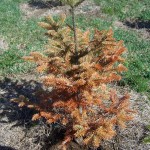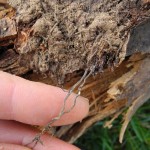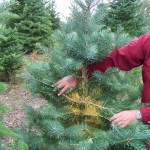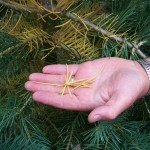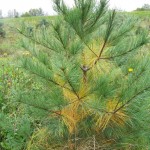Allies in the Trees
Do you recognize this one? I saw this insect at a couple of tree farms during the last week of May and first week of June. This is an immature ladybug a.k.a. Ladybird beetle. The ladybug larvae, like the adult beetles they become, are voracious eaters of aphids and other insects.
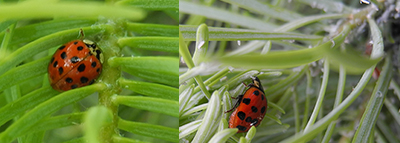
An adult ladybug may consume 5000 insects in its lifespan. The ladybug on the right is on its way to a meal of balsam twig aphids.
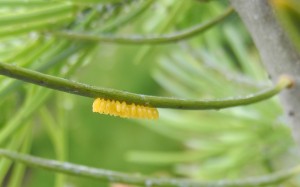
This is a good sign. Bright yellow ladybug eggs hanging from a fir needle means more of these “eating machines” will be hatching soon.
There are many other beneficial creatures, which feed on pests in tree farms and often go unnoticed. These include “good” mites, various predatory and parasitic insects, spiders and even birds. By keeping pesticide applications to a minimum the populations of the beneficial partners are maintained and nature can do its good work without us even knowing it.


